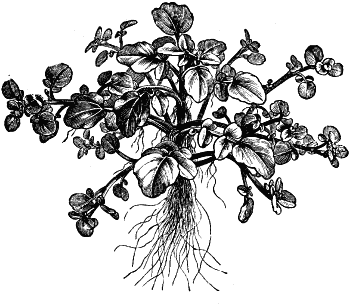Watercress terrine
Watercress terrine is one of Victor Gordon’s examples from The English Cookbook of a traditional concept transformed into a lightened ‘new English’ dish, something inventive as well as recognizably British. It relies on cullis, a brothy sauce widely employed by British cooks at least as early as the seventeenth century. The cullis for this recipe is itself one of Gordon’s innovations, for while watercress is a quintessentially English ingredient it was not one commonly used for such a sauce. You will need four ramekins to hold four starters.
 For the cullis:
For the cullis:
- 2 bunches watercress trimmed of thick stalks and yellow leaves
- about 1 cup chicken or vegetable stock
- 1 Tablespoon heavy cream
- 1 teaspoon unsalted butter
- 1 teaspoon lemon juice
For the terrine:
- the cullis
- butter to smear each ramekin
- 2½ Tablespoons heavy cream
- 2 beaten eggs
- 1 Tablespoon cream cheese
- Make the cullis by simmering the watercress in the stock until tender but not insipid for no more than 5 minutes.
- Drain the watercress and reserve the liquor, then use a little of it to puree the greens in a food processor or blender
- Smear the puree into a small saucepan over low heat along with the cream, butter and lemon juice.
- Simmer the cullis until it thickens, stirring constantly.
Preheat the oven to 350˚.
- Smear the ramekins with butter, mix the other ingredients together and drop an equal portion into each ramekin.
- Cover the ramekins with parchment or silicone paper or foil, place them in a bain marie and bake them for a scant 20 minutes.
- Leave the terrines to cool before popping them out of the ramekins onto separate plates.
Notes:
-The terrines are pretty, even festive looking; the lemon juice helps set the verdant color.
-Gordon considers the cream cheese option but it does help bind the terrines.

